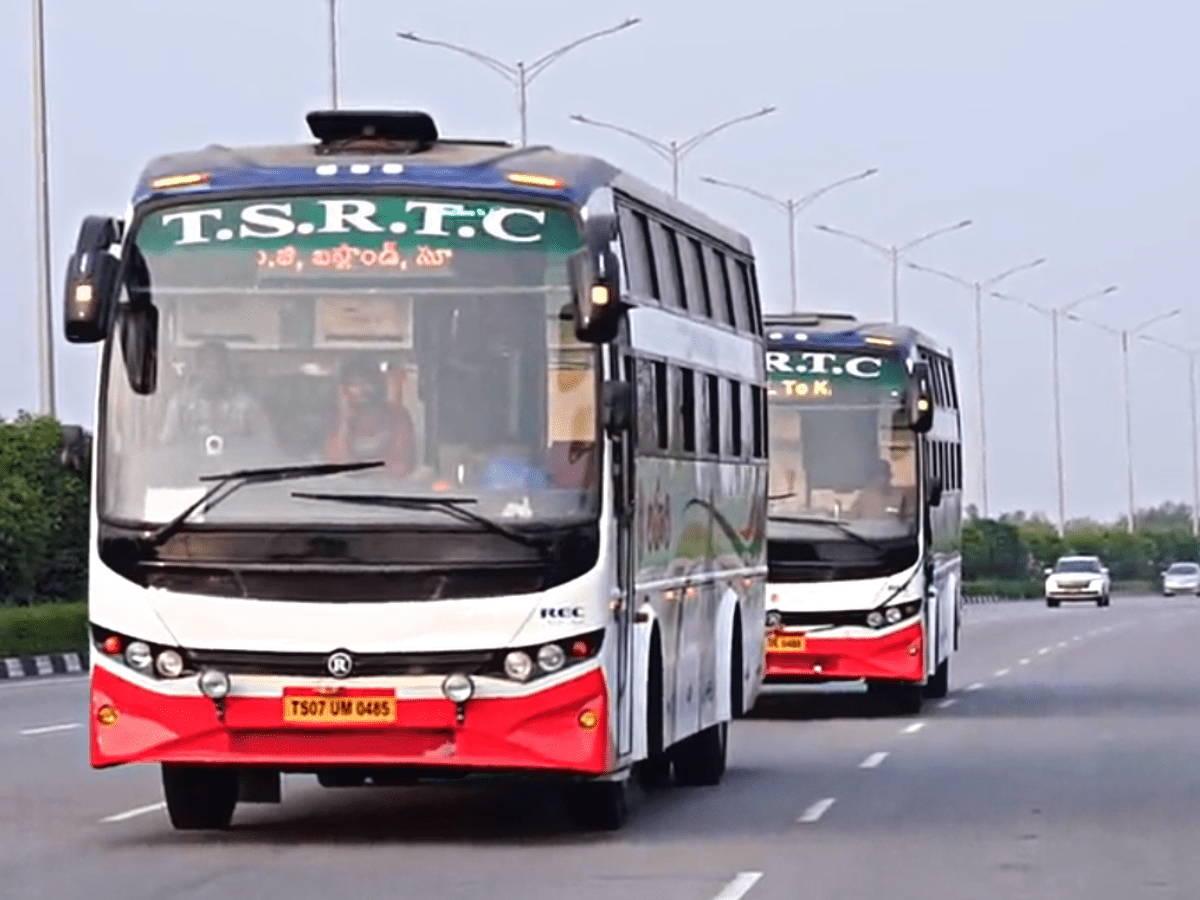
Hyderabad: During a period when the Telangana State Road Transport Corporation (TSRTC) has been grappling with substantial financial losses compared to other State Road Transport Undertakings (SRTUs), recent official documents show that it has occupied place among the top five best-performing SRTUs in the country.
Earlier this year, the Ministry of Road Transport and Highways conducted a comprehensive assessment of 56 SRTUs for the years 2016-17, 2017-18 and 2018-19. Key performance indicators included parameters such as fleet size, average fleet age, revenue, profits or losses, average age of buses, and daily passenger count.
TSRTC consistently held the fourth position within the top quartile, representing one of the four groups, in the years 2016-17, 2017-18, and 2018-19. By 2018-19, it boasted a fleet size of 10,481 buses. The Maharashtra State Road Transport Corporation claimed the top spot with 18,796 buses. TSRTC’s total fleet size accounted for 6.88% of India’s combined fleet.
In terms of staff strength, TSRTC ranked as the third-largest SRTU in the country with 50,656 employees, following closely behind the Andhra Pradesh State Road Transport Corporation.
It comes as no surprise that the impact of the COVID-19 pandemic was felt by all SRTUs, as bus services were largely suspended, except for essential services transportation of medical personnel, government employees, and the transportation of migrant workers to railway stations to board Shramik special trains. But, before the pandemic disrupted normal operations, TSRTC stood as the fourth highest in terms of revenue-generating kilometers and the third highest in terms of revenue generation. In the fiscal year 2018-19, TSRTC generated nearly Rs 4,200 crore, ranking second only to APSRTC with over Rs 6,125 crore.
While these performance indicators paint a positive image of TSRTC’s, there is a downside. In 2018-19, the lifeline of Telangana’s transport was the sixth-largest loss-making SRTU, incurring losses of Rs 929 crore.
In the realm of safety, TSRTC’s performance left much to be desired. For three consecutive years, from 2016-17 to 2018-19, TSRTC buses were involved in road accidents, with fatal accidents numbering 324, 262, and 294, respectively. This resulted in a compensation payout of Rs 130 crore to victims’ families.
Furthermore, TSRTC ranked among the top five SRTUs in terms of providing subsidies such as bus passes to its passengers. Over the three-year period from 2016-17 to 2018-19, the subsidy amount steadily increased from 553.70 crore to over Rs 644 crore.
Although the data may be slightly outdated, with developments like the COVID-19 pandemic and rising diesel prices impacting TSRTC’s financial health since 2019, recent data indicates a decrease in fleet strength from 10,481 in 2018-19 to 9,232. Many buses are currently out of service and scheduled for scrapping, with TSRTC yet to acquire new buses, particularly for the Greater Hyderabad Zone (GHZ). As of February of this year, approximately 38% of the entire fleet consists of Pallevelugu and Mini-Pallevelugu buses, while GHZ operations make up around 32% of the fleet, with roughly 3% comprising long-distance air-conditioned buses.
In terms of losses, TSRTC incurred a loss of Rs 595 crore till February 2023 alone. In comparison with the circumstances over a similar period last season, this year’s losses are significantly lower as losses stood at around Rs 2,100 crore till February 2022.

